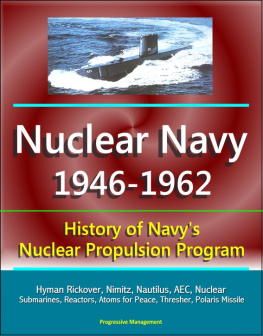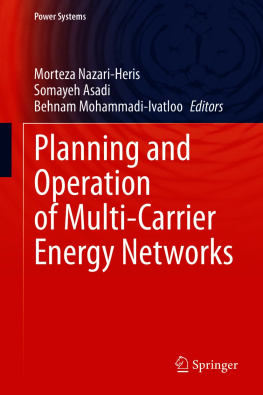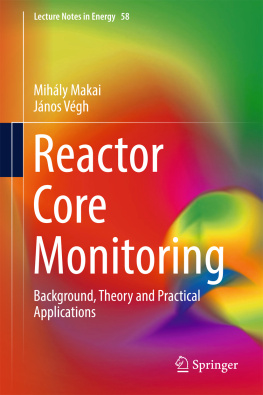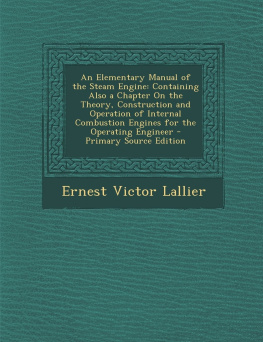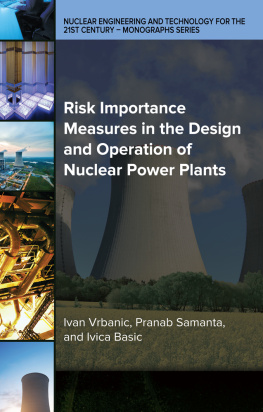Steam Generators for Nuclear Power Plants
First Edition
Jovica Riznic

Copyright
Woodhead Publishing is an imprint of Elsevier
The Officers Mess Business Centre, Royston Road, Duxford, CB22 4QH, United Kingdom
50 Hampshire Street, 5th Floor, Cambridge, MA 02139, United States
The Boulevard, Langford Lane, Kidlington, OX5 1GB, United Kingdom
2017 Elsevier Ltd. All rights reserved.
No part of this publication may be reproduced or transmitted in any form or by any means, electronic or mechanical, including photocopying, recording, or any information storage and retrieval system, without permission in writing from the publisher. Details on how to seek permission, further information about the Publisher's permissions policies and our arrangements with organizations such as the Copyright Clearance Center and the Copyright Licensing Agency, can be found at our website: www.elsevier.com/permissions.
This book and the individual contributions contained in it are protected under copyright by the Publisher (other than as may be noted herein).
Notices
Knowledge and best practice in this field are constantly changing. As new research and experience broaden our understanding, changes in research methods, professional practices, or medical treatment may become necessary.
Practitioners and researchers must always rely on their own experience and knowledge in evaluating and using any information, methods, compounds, or experiments described herein. In using such information or methods they should be mindful of their own safety and the safety of others, including parties for whom they have a professional responsibility.
To the fullest extent of the law, neither the Publisher nor the authors, contributors, or editors, assume any liability for any injury and/or damage to persons or property as a matter of products liability, negligence or otherwise, or from any use or operation of any methods, products, instructions, or ideas contained in the material herein.
Library of Congress Cataloging-in-Publication Data
A catalog record for this book is available from the Library of Congress
British Library Cataloguing-in-Publication Data
A catalogue record for this book is available from the British Library
ISBN: 978-0-08-100894-2 (print)
ISBN: 978-0-08-100928-4 (online)
For information on all Woodhead publications visit our website at https://www.elsevier.com/books-and-journals

Publisher: Joe Hayton
Acquisition Editor: Maria Convey
Editorial Project Manager: Ashlie Jackman
Production Project Manager: Omer Mukthar
Cover Designer: Greg Harris
Typeset by SPi Global, India
List of contributors
C.B. Bahn Pusan National University, Busan, Republic of Korea
S. Bakhtiari Argonne National Laboratory, Lemont, IL, United States
L.B. Carroll Canadian Nuclear Safety Commission, Ottawa, ON, Canada
I. de Curieres IRSN, Fontenay-aux-Roses, France
A. Drexler AREVA GmbH, Erlangen, Germany
J.A. Gorman Dominion Engineering, Inc., Reston, VA, United States
M. Hassan School of Engineering University of Guelph, Guelph, ON, Canada
M. Huang Canadian Nuclear Laboratories, Chalk River, ON, Canada
K. Khumsa-Ang Canadian Nuclear Laboratories, Chalk River, ON, Canada
M. Kreider Dominion Engineering, Inc., Reston, VA, United States
S. Laroche Canadian Nuclear Laboratories, Chalk River, ON, Canada
S. Majumdar Argonne National Laboratory, Lemont, IL, United States
A. McKay Tottenham, ON, Canada
E.L. Murphy CONSULTANT, Gaithersburg, MD, USA
L. Obrutsky B. Eng, CGSB ET Level 3 M&O Tech, Deep River, ON, Canada
L. Papp University of West Bohemia, Pilsen, Czech Republic
J. Riznic Canadian Nuclear Safety Commission Operational Engineering Assessment Division, Ottawa, ON, Canada
J.C. Smith Northern Nuclear Industries, Inc., Ayr, ON, Canada
T. Sollier Institut de Radioprotection et de Sret Nuclaire-IRSN, Paris, France
C.W. Turner Deep River, ON, Canada
J. Vacek University of West Bohemia, Pilsen, Czech Republic
Robert D. Varrin, Jr. Dominion Engineering, Inc., Reston, VA, United States
G. White Dominion Engineering, Inc., Reston, VA, United States
Z. Zeng Argonne National Laboratory, Lemont, IL, United States
Preface
As of Jan. 2017, there were 450 operational nuclear power plants producing about 392 GWe or 12% of total electricity around the world. Safe and reliable operation of the current fleet of nuclear power plants is essential to ensure continued growth of the nuclear industry despite declines in some traditional markets. In Asia and the Middle East, many new plants are being built, in most cases as a replacement to fossil fuel burning plants. China has an ambitious nuclear program, importing the latest designs, and at the same time emulating path of Japan and Korea by developing its own design alternatives of nuclear power plants. However, given the slow rate of new nuclear builds in North America and Europe, the technical focus there has shifted toward enhancement of power output (uprate), integrated planning, and organization to ensure shorter inspection and maintenance outages and consequently high capacity factors, as well as extending plant life. In an era of cheap natural gas and the lack of credit for noncarbon emitting electricity production, it is often easier and less costly to extend the life of existing power plant than to build new one. Thus, plant refurbishment (replacement of reactor internals and steam generators) continues to be a driver.
Today there are more than 1300 steam generators in good operational condition in those 450 nuclear power plants worldwide. Power plants have anywhere from 2 to 12 steam generators. Steam generator provides a heat sink to cool the reactor while producing steam, but its tubes (between 4000 and 13,000 tubes for a total length of 70270 km, per steam generator) must also withstand pressure of more than 15 MPa, while maintaining safe and structurally sound barrier between the radioactive reactor coolant and the secondary water/steam flowing to the steam turbine. A steam generator is therefore not only large heat exchanger, but also a pivotal component, that controls dynamic behavior of the whole nuclear power plant, whether under normal operation or upset and incident transients, providing a protective barrier for stable operation and safe plant shutdown.
There has long been a need for a steam generator reference book suitable for working professionals from those working in power generation and utilities operations, to technical service providers, to those working in national and industry labs and other research and development establishments, to finally students, educators, and trainers. The aim of this book is to serve as a concise and timely resource for professionals involved in all phases of nuclear steam generation life cycle, from design, manufacturing, operation and maintenance, and long-term operation. The ultimate goal is to provide an open-domain resource that will enable those new to the nuclear industry, whether a young engineer, a manager, a technical and/or regulatory specialist, or a student, to improve their knowledge of steam generators in nuclear power plants and prepare to continue their journey into more specific areas of interest and specialization. We wrote this book with intent to cover fundamental engineering aspects and phenomena, as well as practical content, which typically does not appear in technical or scientific journals. The book is not intended to be a steam generator design guide or otherwise prescriptive reference book, but rather to describe technology and industry practices, its growth and what we have learn through operational experience, and current state-of-the-art. The book does not focus on any specific vendor-based technology but rather provides a broad generic technology overview across PWR, VVER, and PHWR nuclear power systems. Some of the most recognized experts worldwide contributed writing chapters from their field, and we sincerely hope that the book will be well received by the professional community at large, particularly among technicians, engineers, and researchers working on steam generators.





